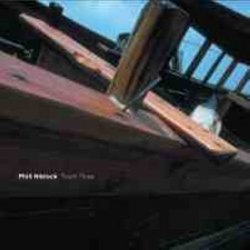| All Artists: Phill Niblock Title: Touch Three Members Wishing: 5 Total Copies: 0 Label: Touch UK Release Date: 5/2/2006 Genres: Dance & Electronic, Pop Styles: Techno, Dance Pop Number of Discs: 3 SwapaCD Credits: 3 UPC: 5027803146921 |
Search - Phill Niblock :: Touch Three
 | Phill Niblock Touch Three Genres: Dance & Electronic, Pop
This is Phill Niblock's third release on the Touch label. Phill Niblock is a New York-based minimalist composer and multi-media musician and director of Experimental Intermedia, a foundation born in the flames of 1968's ba... more » |
Larger Image |
CD Details
Synopsis
Album Description
This is Phill Niblock's third release on the Touch label. Phill Niblock is a New York-based minimalist composer and multi-media musician and director of Experimental Intermedia, a foundation born in the flames of 1968's barricade hopping. He has been a maverick presence on the fringes of the avant garde ever since. In the history books Niblock is the forgotten Minimalist. His influence has had more impact on younger composers such as Susan Stenger, Lois V. Vierk, David First, and Glenn Branca. Touch Three is minimalism in the classic sense of the word, if that makes sense. Niblock constructs big 24-track digitally-processed monolithic microtonal drones, and the result is sound without melody or rhythm. Movement is slow, geologically slow. Changes are almost imperceptible, and his music has a tendency of creeping up on you. The vocal pieces are like some of Ligeti's choral works, but a little more phased. He says: "What I am doing with my music is to produce something without rhythm or melody, by using many microtones that cause movements very, very slowly." These nine pieces were made from March 2003 to January 2005. They were all made (except "Sax Mix") by recording a single instrument with a single microphone. The recordings were direct to the computer/hard disk, most of them using a Powerbook G4, Pro Tools, an M-box and an external firewire drive. The resulting mono sound files were edited to remove breathing spaces, leaving the natural decay of the tone, and the attack of the subsequent iteration of the same tone. Each note was represented by several repetitions, perhaps ten for each tone, of about 15 seconds duration each. Each piece uses a few tones. A simple chord, perhaps. Additional microtonal intervals were produced in Protools using pitch shift. The pieces were assembled in multitracks, usually either 24 or 32 tracks. The recording environment varied from a simple apartment in Berlin (Ulrich Krieger's) to a very large hall used for symphony orchestra performances and recordings, with a sizable audience space. The recordings were generally done quite closely miked. One hears only the sound of the instrument. There is no electronic manipulation in the recording, the editing of the tones, or in the mix. The only changes to the recorded tones are the pitch shifts to create microtones...the microtones are doing the work.

 Track Listings (3) - Disc #1
Track Listings (3) - Disc #1